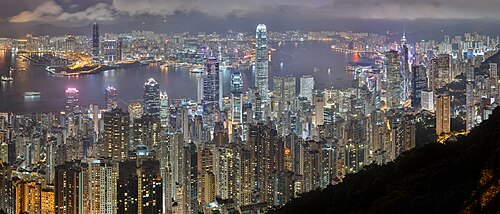Tower
A tower is a building much taller than it is wide. Their functions may be different, but historically they have been military and religious, as well as aesthetic (for entertainment of the view and for adornment, indicates the DRAE). More recently, the term is used to designate different technological structures, as well as to office buildings or high-rise housing. The towers are one of the main urban landmarks, and they shape the personality of a city.
The oldest reference to these buildings is found in the Bible: the episode of the Tower of Babel, which is considered to be inspired by the Mesopotamian ziggurat. In the fortified limes of the Roman Empire, turris and burgus were built, precedents of medieval tower-houses. The Middle Ages were a period characterized by the construction of military and religious towers (both Christian and Muslim). In civilizations other than the Western one, towers with similar shapes and functions were also built (Mesoamerican pyramids, Zoroastrian towers of silence, Indian gopuram, Chinese pagodas, Japanese castles, etc.); In some cases, some ancient cities even built their homes high up, like Shibam (Yemen), the Manhattan of the desert.
The evocative capacity of the towers has made them very frequently used in art, both in the visual arts and in literature (The Two Towers from the series of novels El señor of the Rings by J. R. R. Tolkien), where the archetype that symbolizes a tower can have different symbologies, but always linked to isolation: ivory tower, when it is positive, or oppression and prison, especially due to the historical significance of the repressive function of many towers, identified with power (the Tower of London, the towers of the Bastille).
I made a tower.between the rocks and the rocks
of those mountains, where only
The light has found its way,
for defending the entrance
His rustic obelisks.
(...)
There Segismund lives
mean, poor and captive.
Calderon de la Barca, Life is sleepAct I.
Military towers
Towers are an essential element of military architecture, both as part of a fortified circuit and in isolation.
Isolated towers
In the terminology of Roman military constructions, the word castrum designates the Roman camps, which were surrounded by a palisade and reinforced with towers (when the construction elements became stable, they could pass to be made in stone); while the words turris and burgus designate isolated towers, such as those that guarded the limes (external border of the Empire). A similar typology later had the towers called mota castral and the tower-houses. Outside of Europe, and saving the formal differences, the basic typology of the Japanese castle is similar.
Watch-towers
A watchtower, watchtower, or watchtower is a type of fortification whose primary use is military. They are generally isolated structures. Its main purpose is to provide a high and safe place from which to conduct surveillance and make military observations. In some cases, other non-military towers, such as religious ones, have been used as watchtowers. Prisons, concentration camps and other facilities also use watchtowers designed to observe both inside and outside.
Coastal watchtowers
The coastal watchtowers were a series of watchtowers built in the 16th century on the Mediterranean coasts of Spain to defend them from the attacks of the Barbary pirates. They are located mainly in the province of Alicante, in the Region of Murcia and in the provinces of Almería, Granada and Málaga, as well as on the Andalusian Atlantic slope, in the provinces of Cádiz and Huelva. Most of these towers were in use until the 19th century.
Castle towers and walls
The towers of castles and walls (in general, of all kinds of fortifications) have different forms and functions. When they are circular, they are called "cubes". When they are large, they are called "towers".
The oldest wall tower of which there is archaeological evidence is possibly the so-called tower of Jericho, about 8 and a half meters high, one of the structures of the walls of Jericho, from the VIII millennium BC. c.
Watch Tower
Torre albarrana is a tower that forms part of a fortified enclosure with which it is connected, although generally exempt from the wall and connected to it by a small arch or bridge, which could be easily destroyed if the tower fell in the hands of the enemy. It can also be attached as a great bastion or bastion but in this case it is larger than the others.
It serves as a watchtower or watchtower, but also to harass the enemy who tries to approach or exceed the wall.
Examples of albarranas towers can be the Torre del Oro in Seville, that of Malmuerta in Córdoba or the Torre de Espantaperros in Badajoz (whose citadel has several examples of these towers), all in Spain, although it is believed that the tower Swillington at Pontefract Castle in Yorkshire, United Kingdom, is an example of this type of building.
Tower of homage
The keep is the central structure of the medieval castle (donjon in French castles, bergfried in German ones, maschio or < i>mastio in Italians, keep in English). It is a prominent tower, taller than the wall, and could usually be isolated from the rest of the fortress. It is the main tower, the one that serves as the lord's residence and fulfills the most important functions of the castle, housing the main rooms and, on occasions, the food stores. It is in the most sheltered position in relation to a possible external attack, so that if the rest of the defenses were to succumb, this tower would provide a last refuge.
Siege Tower
The siege towers consisted of a transportable wooden frame, in the shape of a tall prism or pyramid trunk, which were used in the Ancient and Middle Ages to fight and assault the enemy walls, reaching their height. If their approach was successful, they gave several armed men easier access than ladders to take. Like all medieval siege weapons, the tower also became obsolete with the generalization of the cannon from the 15th century.
Urban towers
The medieval cities of Western Europe were characterized by being enclosed in circuits of walls, and their prominent buildings raised towers, both for defensive purposes and for prestige purposes, in a competition for height between different institutions or families within the city. city and between different cities. Notable examples can be seen in Florence, in San Gimignano or in Cáceres.
Very often, the fight between the towers for control of urban space was waged between the civil power and the ecclesiastical power, as is made clear with great irony in this famous passage from Don Quixote de la Mancha turned into a literary cliché due to its double reading (denounce the subordination of society and the State to the church):
“Let us (...) the chasar,” Don Quixote replied. “And he warns, Sancho, or that I see little or that that big lump and shadow that from here is discovered must make the palace of Dulcinea.(...)
Don Quixote, and having walked like a hundred steps, gave with the lump that made the shadow, and saw a great tower, and then he knew that such a building was not to boast, but the main church of the people. And he said,
"With the church we have given, Sancho.
"I see it," answered Sancho, "and prays to God that we do not give with our graves, that it is not a good sign to walk through the skeletons at such times, and more having said at your mercy, if I do not remember, that the house of this lady must be in a dead end.
"Blessed be of God, mindhead!" said Don Quixote. Where have you found that the alcazars and royal palaces are built in dead ends?
"Lord," said Sancho, "in every land its use: perhaps it is used here in the Toboso to build in alleys the palaces and large buildings; and, so, I beg your mercy to let me look through these streets or alleys that are offered to me: it might be that in some corner I may touch with that czar, that I may see him eaten of dogs, that brings us corridos and ass.
Part two, chapter IX Where you tell what in it you will see.
Towers with religious function
Tomb Towers
Funerary monuments have taken the form of a tower in many cultures, since megalithic monuments (menhirs and taulas) project in height, although they are not towers in the sense of buildings accessible inside) and the Egyptian and Mesoamerican pyramids (although the dimensions of the height only exceptionally manage to exceed those of the base). Roman columbariums and columns, Tibetan stupa or Japanese nokotsudo may also have a tower-like shape. In the Zoroastrian religion, the towers of silence are high places surrounded by a wall, where corpses are left for vultures to dispose of.
Gopuram
Hindu temples (mandir) have pyramidal towers called gopuram above their doors (dvara).
Pagoda
In the Far Eastern countries where Buddhism spread, temples often contain tall wooden towers with several stories (usually five) and square or octagonal bases, with characteristic curved roofs.
One of the most impressive Chinese pagodas was the Nánjīng Táotǎ (Nanjing Porcelain Tower), from the 18th century XV, destroyed in the XIX century. It had nine stories, and was covered with white porcelain bricks. Its 80 meters were only surpassed by the Liaodi Pagoda in Dingzhou (84 meters) and by the missing pagoda that was built in Chang'an in the 17th century VII, which is said to have reached a hundred meters.
In Vietnam, the Chùa Một Cột (One Pillar Pagoda) is an icon of their culture.
Church and monastery towers
Although not generally, from early Christian art some churches included towers, such as the Basilica of San Lorenzo in Milan (4th century ), which had four small towers. From the V century, it became common to have two towers in the narthex, flanking the façade, or a tower in the transept (in the case of those with a cross plan, such as the Church of the Holy Apostles in Constantinople) or on the presbytery (in the case of those with a basilica plan, to give light to the apse, as in the basilica of Meriamlik -year 471-). The church of San Martín de Tours (470) was made with a tower over the transept and another that was later used as a bell tower. In Western Europe, church towers from the VI century onwards have a marked fortification character, the result of the time of the invasions. In Byzantine architecture, especially Syrian churches, towers become symbols of power, a model recognized in the Acheiropoietos of Thessaloniki. A pair of towers on the façade, flanking a loggia where the relics are exhibited, is the typical typology of the pilgrimage destination churches, characteristic of the churches of Cappadocia from the first half of the century VI. The model was also followed in Sofia Cathedral (VI century). Towers above the apses appear in the churches of Sergilla (one) or Sinsarah (two). The towers of the basilica of Santa Eulalia de Mérida (IV century), but with a constructive function, were also built on top of the apses. much more marked, as it does not start from the vault of the apses, but from its outer wall.
Since the pre-Romanesque, medieval monasteries (such as Fulda in Carolingian architecture) were conceived as true fortified citadels, in which the towers fulfilled a function equal to that of castles. On the other hand, in the churches of Visigothic or Asturian architecture there was no significant use of towers.
Romanesque architecture gave a different role to the towers in their different local variants. In Italy, the campanile was conceived as a free-standing building, separate from the main body of the church (Pisa Cathedral -mid-century XI-). In Germany, Ottonian churches such as St. Michael's in Hildesheim (beginning of the XI century) were characterized by their symmetrical arrangement (identical in head and feet), with four cylindrical towers and two massive domes.
Gothic was characterized by the search for height and its sharp needles or spiers. In the art of the Modern Age the function of the towers remained aesthetic and spiritual; being one of the most important urban landmarks.
Some churches of the XX century continue to use towers to perform some of their traditional functions (bell tower and presence urban). In some cases, they become the most visible part of the temple itself, as is the case with those of the Sagrada Familia in Barcelona, designed by Gaudí and still under construction, in which they also have symbolic functions (each of the eighteen towers represents a character: Jesus Christ, the Virgin, the four evangelists and the twelve apostles).
Bell towers
The bell tower or campanil is the tower where the bells are placed, with the purpose of summoning the attendance of the parishioners to the religious service. Some bell towers house a carillon, a musical instrument made up of several bells.
A special type of bell tower is the campanile, a bell tower that originally emerged in Italy and developed as a free-standing building, with a circular or square plan, entirely independent from the religious building. The best known are the Leaning Tower of Pisa, and the Campanile of San Marco in Venice.
Another type of bell tower is the belfry, which is not a tower per se, but a solid wall, most of them with mixtilinear finials where a bell or a series of bells are placed, from the largest to the smallest; in spaces or openings called "clear".
Conjurations
Minarets or minarets
Minaret or minaret are the names with which the Arabic word منار (minar -"lighthouse"-) is translated in Romance languages, which designates the towers of mosques muslims Its ritual function is to provide an elevated environment for the muezzin or muezzin (مُؤَذِّن mu'aḏḏin -"cryer"-) to make the five calls (أَذَان adhan) that are made every day to call for prayer (صلاة salat). For this, the minaret usually has a balcony that surrounds it at its highest part, from which the call is made. Currently, the muezzin is usually helped with a public address system to be heard more easily in large cities.
The shape of the minarets varies according to the zones. In the Maghreb, the mosques usually have only one, with a square floor plan. In the Muslim East, mosques with more than one are common, generally two or four, and in a variable way. Characteristic in places of Ottoman influence are the slender minarets with a circular section, with a protruding balcony and a conical roof. The number of minarets is also significant: when Sultan Ahmed I had six minarets erected in Istanbul's Blue Mosque, he was criticized because until then it had only had that number Masjid al-Haram (" the holy mosque of Mecca, where the Kaaba is kept); The sultan solved the problem by having a seventh minaret built in Mecca. The minaret of the mosque of Samarra (Iraq), an ascending spiral, is distantly inspired by the shape of the ziggurat.
Timbuktu is characterized by minarets made of earth, straw and wood, three of which (together with their mosques-madrasa) have been declared World Heritage Sites by UNESCO (Sankore, Djinguereber and Sidi Yahya).
The function of the minaret is also to mark the physical domination of space. When the Turks conquered Constantinople, the Islamization of Hagia Sophia was indicated by surrounding with four minarets the immense mass of the dome that characterized the city's skyline.
Similarly, the Spanish Reconquista Christianized the minarets, turning them into church towers that rose above the mosques.
Towers with technological function
Mills
Windmills are pre-industrial technological structures that required greater height, especially windmills, which characterized the landscape of some regions, such as the Netherlands or La Mancha.
Clock Tower
First sundials and then mechanical clocks have been arranged since the Middle Ages in the most visible parts of all kinds of buildings, but especially in churches and town halls. Already in the Athens of the century I a. C. a horlogion was built in the shape of a tower: the Tower of the Winds (which had nine gnomon -sundials-, an clepsydra -water clock- and other elements); and in China in the 11th century Su Song built a "clock tower" very sophisticated.
Power lines pylons
High tension towers are used for power lines.
Cooling tower
Cooling towers are structures for cooling water and other media at temperatures close to ambient. The primary use of large industrial cooling towers is to lower the temperature of cooling water used in power plants, oil refineries, petrochemical plants, natural gas processing plants, and other industrial facilities.
Cooling towers use the evaporation of water to reject heat from a process such as electric power generation. Cooling towers range in size from small to very large structures that can exceed 120 meters in height and 100 meters in length. Smaller towers are normally built in factories, while larger ones are built on site.
Drilling headframes and derricks
Mining facilities include "headframes", external towers over the drilled shafts, whose function is to shelter the pulleys or machinery necessary for the extraction of the mineral or the elevators for the movement of the miners.
The so-called "drilling rigs" They are those built to support the complex equipment necessary for the prospecting and subsequent mechanical extraction of subsoil resources of a fluid nature, such as oil or natural gas.
Control Tower
Control towers are towers, at the top of which is a control room, from which the traffic of a port or airport is directed and controlled. The location and height of said control center are essential to see the entire area to be controlled.
In the air control towers, air traffic control is carried out in the area of an airport and its surroundings, that is, the control of the taxiing, takeoff, approach and landing of aircraft.
Less widespread than airport control towers, port control towers direct traffic in ports of a certain size, and compact enough for visual control from the tower to be effective.
Solar Tower
A solar tower is a construction that tries to take advantage of solar energy through air convection.
In its simplest form, it consists of a fireplace painted black. During the day, solar energy heats the chimney, which in turn heats the air inside it, creating an upward draft inside the chimney (or tower). The suction this creates at the base of the tower can be used to ventilate and cool the underlying building. In most parts of the world, it is easier to harness the energy of the wind to produce ventilation of this type, but on hot, windless days the chimney could provide ventilation when it would not otherwise be possible.
This principle has been proposed for the generation of electric power, using a large greenhouse at the bottom rather than using only chimney heating.
The main problem with this proposal is the relatively small difference between the highest and lowest temperature of the system. Carnot's theorem greatly restricts the efficiency of the conversion in these circumstances.
Signal towers
The height of the towers makes them ideal to be used as a place to emit all kinds of signals, and this function was used since Antiquity with lighthouses for navigation and terrestrial towers of a military nature (such as watchtowers) that they could be used for fast communication of optical signals (similar to smoke signals). Already in the industrial age, the optical telegraph preceded the electrical telegraph. In the XX century, telecommunications required towers for the emission of electronic signals, using some of the first skyscrapers for this, such as the Madrid Telefónica Building (1926-1929).
Headlights
The name "lighthouse" comes from the "torre de Faro" or the island of Faro in Alexandria, one of the seven wonders of the ancient world, (the Lighthouse of Alexandria).
From then on, a lighthouse is an emitter of light signals for navigation, which is usually located on a tower built near the coast or even in the sea at a certain distance from the coast, in ports, in places where navigation routes pass or in especially dangerous ones.
The headlight bulb has Fresnel lenses whose number, width, color and spacing varies according to each headlight. When the headlamp is in operation in the dark, the lamp emits beams of light through the lenses, which rotate 360 degrees.
From the sea, ships not only see the light of the lighthouse, which warns them of the proximity of the coast, but they also identify it by the intervals and colors of the light beams, so that they can recognize offshore what point of the coast they are.
Modern satellite navigation systems, such as GPS, have diminished the importance of headlights, although they continue to be useful and safe for night navigation, since they allow verification of positioning on the navigation chart.
Optical Telegraph Towers
Communications Tower
Many towers are used as support for antennas to broadcast signals for radio, television, mobile telephony and all kinds of telecommunications. They are usually metallic structures in the form of a lattice tower, and the equipment supported by dipole antennas and satellite dishes.
Radar Towers
There are also radar towers for this type of signals, with different uses (military, air traffic, meteorology -weather radar-, etc.)
Viewpoint towers and decorative towers
Some towers do not fulfill practical functions, they serve as decoration or commemoration.
The obelisks, built in ancient Egypt, symbolized a ray of the Sun, the stability and creative force possessed by the solar god Ra. Many Egyptian obelisks were brought to Rome, to the point that there are now more obelisks in Rome than in all of Egypt. Other western empires also took Egyptian obelisks to erect in their capitals. Obelisks are currently being built for commemorations such as the one in Buenos Aires, which commemorates the first time the Argentine flag was raised in the city.
The Eiffel Tower (330 meters), designed by the French engineer Gustav Eiffel, was built to serve as the entrance arch and viewpoint for the Universal Exposition in Paris (1889), on the centenary of the French Revolution. As it was topped by a French flag, it was also considered a gigantic flagpole.
Other towers are used as urban viewpoints, such as the Torre Espacial de Buenos Aires, the highest in this city with 220 meters to the tip of the antenna, or the Moncloa Lighthouse in Madrid.
Dwelling towers
Multi-story buildings are very old, such as the Roman insulae (whose height was legally limited to 70 feet, or 20 m); but the limitation implied by the discomfort of reaching the top floors by means of stairs meant that five heights were not generally exceeded. Medieval urban towers might surpass them, but the main function of their highest floors was not housing.
With the invention of the elevator at the end of the XIX century, this limitation became a secondary problem (creating others, especially those of security, agglomeration, costs and even the shadow -which deprives large areas of light-). Other necessary innovations were already implemented with the industrial revolution (iron and glass architecture, reinforced concrete, hydraulic pump, etc.)
Skyscrapers
Skyscrapers are high-rise residential and office buildings. The reason for its construction is the maximum economic use of the land. For this reason, multiple skyscrapers are usually found grouped in the commercial areas of large cities (CBD), where the value of the land is high.
It was the Chicago fire of 1871 that gave a generation of architects (the so-called Chicago school) the opportunity to plan a city of skyscrapers. The first building of this type was the Home Insurance Building (William Le Baron Jenney, 1884-1885), with ten floors and a height of 41 m.
From then on, a true race for height broke out, which, when moving from Chicago (where legal limitations were imposed) to New York City, by 1898 the Park Row Building was winning > (119m). In 1908 the Singer Building (187 m) set a new record. The following year it was surpassed by the Metropolitan Life Tower (213 m) and in 1913 by the Woolworth Building (241 m), which held the record until 1930, when it was surpassed by The Trump Building (283 m) and the Chrysler Building (319 m). In 1931 this was in turn surpassed by the Empire State Building (381 m -without the spire-). It was not until 1972 that a larger building was erected: the Twin Towers of the World Trade Center (417 m), destroyed in the attacks of September 11, 2001. In 1973 the record returned to Chicago with the Sears Tower (442 m - today called Willis).
Starting in the 1930s, skyscrapers began to appear in cities in other countries; very early in Latin America (Buenos Aires -1923, Barolo Palace, 100 m, 1936, Kavanagh Building, 120 m-, Mondevideo-1928, Salvo Palace, 105 m-, São Paulo -1934, Martinelli Building, 130 m, 1947, Building Altino Arantes, 150 m-, Mexico City -1945, National Lottery Tower, 107 m, 1956, Latin American Tower, 140 m-, later those of Panama, Venezuela, or Chile-); while in Europe they were not common until after the Second World War, and even caused controversy (La Défense district in Paris, skyscrapers in London -which had to wait until legal limitations were overcome-). The Soviet Union planned the construction of eight large towers (the Stalinskiye Visotki -"Stalin's Skyscrapers"-), seven of which were carried out (in English they are called < i>seven sisters). The Madrid of the fifties, which already had the Telefónica Building (88 m) since 1929, saw the rise of skyscrapers such as the Edificio España (117 m) and the Torre de Madrid (142 m); and later those of the axis of the Castellana (AZCA complex, leaning towers of the Plaza de Castilla and Cuatro Torres). Barcelona introduced skyscrapers to its urban network after the 1992 Olympic Games.
Japan built huge skyscrapers since the 1970s, but since the late XX century, other Asian countries have caught up a real leading role in this type of construction: in 1998 the Petronas Twin Towers in Kuala Lumpur were the first non-American skyscraper to reach the record for the tallest building in the world (although it is questioned what higher architectural elements should be added in the measurement -410 m or 452 m-). In 2003 they were surpassed by Taipei 101 (449 m), surpassed in turn in 2007 by the Burj Khalifa in Dubai (830 m). Also the African megacities and Australia have large skyscrapers. By number and progression, the Chinese skyscrapers stand out and, by their concentration, the impressive set of skyscrapers in Hong Kong.
Towers as rural or leisure housing
In some areas of Spain, especially Catalonia, Aragon and Murcia, it is called a "tower" to a type of traditional rural housing (country house, farmhouse with orchard or house-tower of the orchard or field), which since the end of the century XIX they became leisure residences, of the type that in other areas is called chalet. The name was extended to refer to any type of single-family home, even in urban areas.
Contenido relacionado
Friendship
Turkish
The Brabanzona

![Reconstrucción del aspecto del Burgus Ahegg,[5] en el limes romano del Danubio.](https://upload.wikimedia.org/wikipedia/commons/thumb/0/09/Burgus5.JPG/120px-Burgus5.JPG)













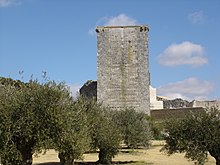














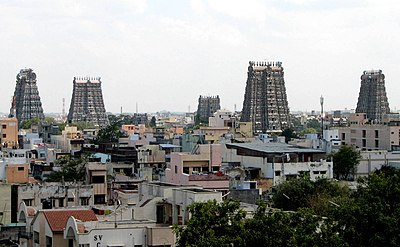
![Pagoda de las colinas fragantes[15] (Xiāngshān Gōngyuán, Beijing).](https://upload.wikimedia.org/wikipedia/commons/thumb/4/49/Fragrant_Hills-pagoda.JPG/90px-Fragrant_Hills-pagoda.JPG)


















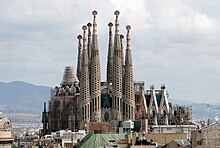


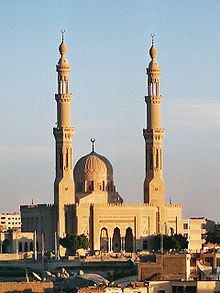













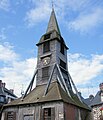


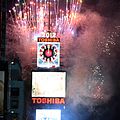

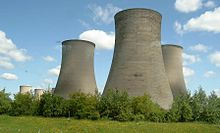






![Lanterna, faro de Génova desde el siglo XII.[21]](https://upload.wikimedia.org/wikipedia/commons/thumb/5/54/Lanterna_di_Genova.jpg/90px-Lanterna_di_Genova.jpg)



![Torre del Radar de Bremerhaven.[24]](https://upload.wikimedia.org/wikipedia/commons/thumb/9/9b/Radarfunkturm2-Bremerhaven.JPG/90px-Radarfunkturm2-Bremerhaven.JPG)
![Texas Towers, plataforma marina con torres de radar.[25]](https://upload.wikimedia.org/wikipedia/commons/thumb/3/3c/Texas_Tower_3.jpg/120px-Texas_Tower_3.jpg)
![AN/FPS-35.[26]](https://upload.wikimedia.org/wikipedia/commons/thumb/7/77/Montauk1.jpg/120px-Montauk1.jpg)

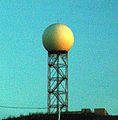


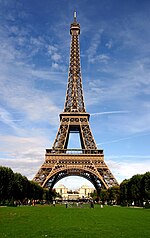




![Insula dell'Ara Coeli, Roma.[27]](https://upload.wikimedia.org/wikipedia/commons/thumb/9/97/Insula_Araceoli-upper_floors.JPG/90px-Insula_Araceoli-upper_floors.JPG)






